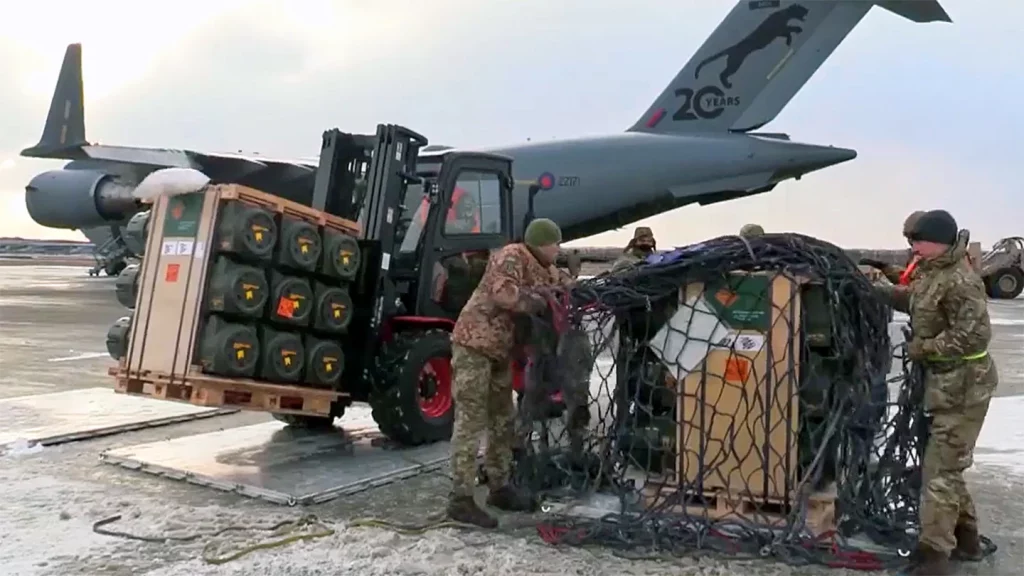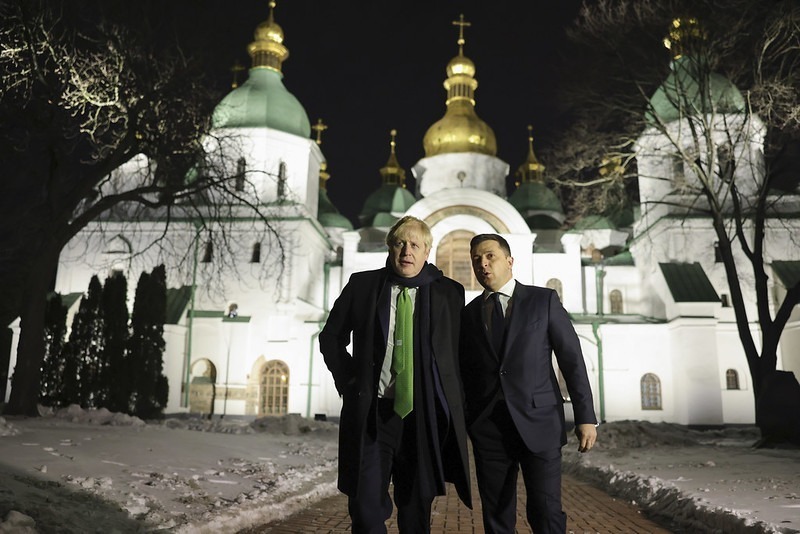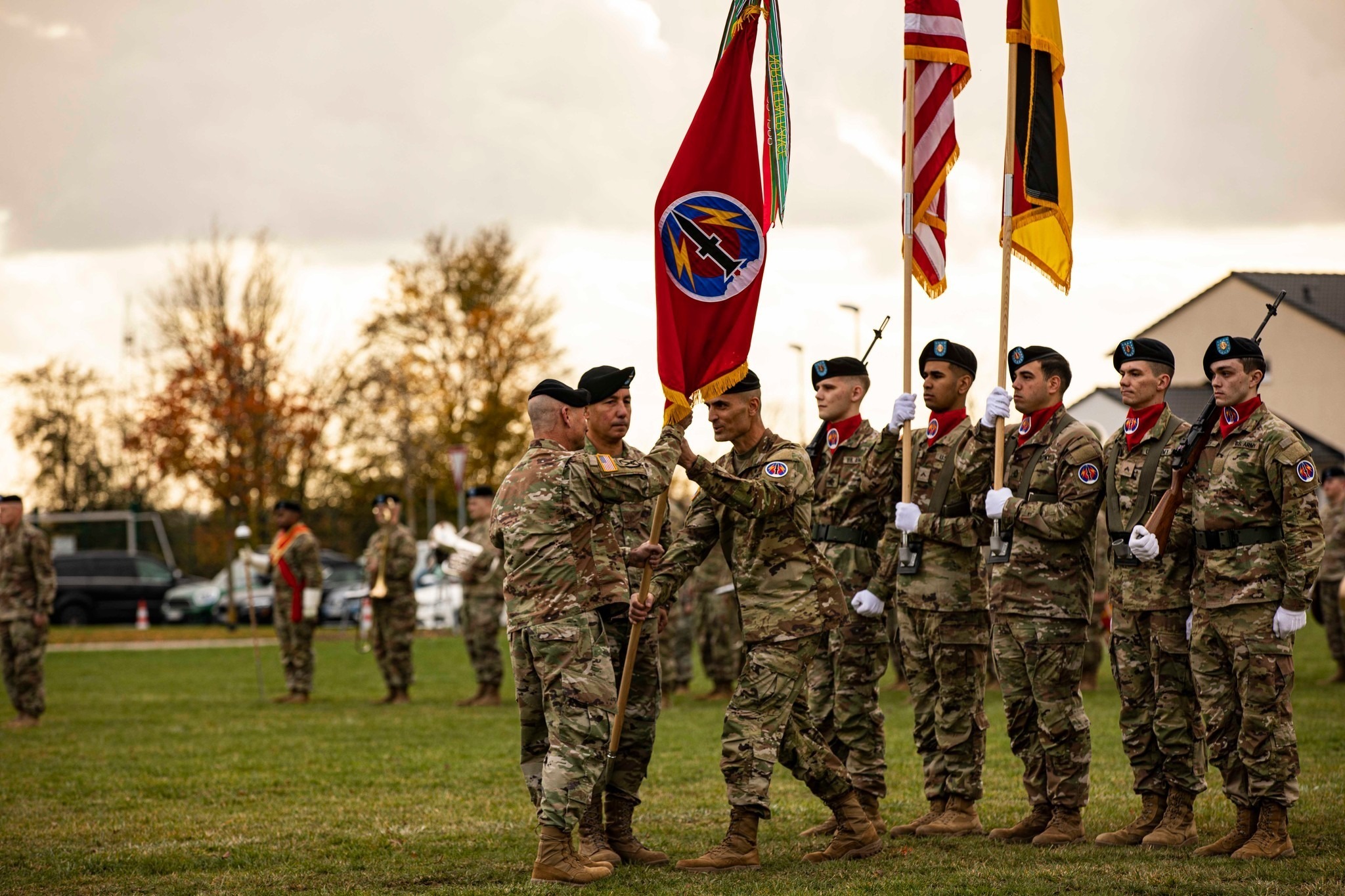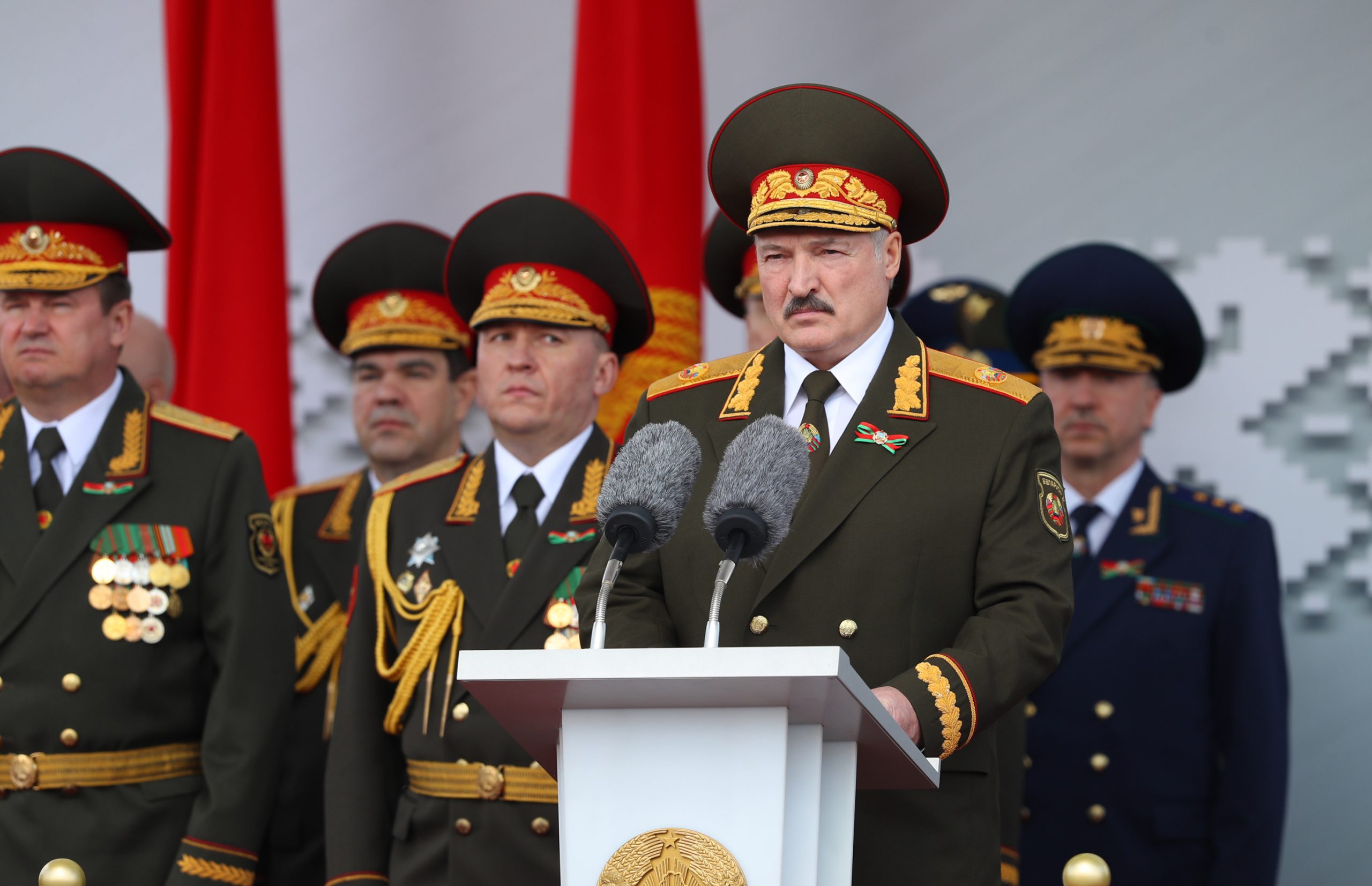A neutral Ukraine with elections to allow for self-government in its eastern Donbas region. That could be the best route out of the crisis with Russia, international relations expert David Speedie has said.
New commitments to avoid medium-range nuclear missiles being stationed in eastern Europe would also ease tensions, he commented.
Speedie, originally from Scotland, sits on the American Committee for US-Russia Accord.
His fellow think-tank members include state department veterans like Jack F. Matlock, who served as Ronald Reagan’s ambassador to the Soviet Union, and Professor Anatol Lieven of the Quincy Institute for Responsible Statecraft.
Speaking to Declassified from his home in Charlottesville, Virginia, Speedie remarked on the “prolonged and dangerous game of chicken” between the US and Russia that’s spanned the last three months.
“The Black Sea is sort of a marina for Nato warships at this point,” Speedie commented. “They have these wonderful exercises that sound like cruises, Operation Sea Breeze, with the Romanian navy and others…There are enough hot heads on both sides, true believers, that it would just take a little bit to set the match to the tinder.”
Minsk protocol
Despite soaring tensions, Speedie points to moments of compromise which he hopes could form the basis for durable peace. He believes negotiations in the Belarusian capital Minsk between Russia and Ukraine from 2014-15 provide a blueprint for how to escape the current crisis.
During several rounds of talks, Putin’s side effectively agreed not to annex the Donbas, the Russian-speaking rebel enclaves in eastern Ukraine. The Organization for Security and Co-operation in Europe (OSCE) mediated the deal, with support from France and Germany.
David Cameron said he preferred the “UK and the US to watch [the talks] from a distance” without directly taking part.
Speedie summarised the deal like this: “There would be a cessation of hostilities, laying down of arms, withdrawal of forces. There would be elections in the Donbas that would lead to a more federal state, still with Ukrainian borders but a certain degree of self-determination – we Scots understand what that means of course.”
However, Ukraine’s parliament refused to implement the Minsk agreement. On Monday, Ukraine’s security chief said the deal was “very dangerous for our country” as the public wouldn’t accept it, leading to unrest. It would certainly be unpopular among Ukraine’s far-right militias.
This impasse means trench warfare continues in the Donbas between government troops and Russian-backed rebels, with human rights abuses and ceasefire violations by both sides.
So far over 14,000 people are estimated to have died in the conflict.
Civilian casualties
While attention has focused on rebel conduct in the Donbas, like their downing of a passenger jet that killed 298 people in 2014, there is reason to be increasingly concerned by the behaviour of pro-government forces.
Speedie said “significant numbers of far-Right extremists, some unashamedly neo-Nazi ‘irregulars’ – Right Sector, Azov Battalion, Svoboda – are involved in combat” in the Donbas.
There, they fight on the same side as Ukraine’s army, and together these forces appear to have harmed civilians.
A recent report from the UN’s Human Rights Monitoring Mission in Ukraine recorded 27 incidents of shelling and gunfire across the frontline that “affected civilian objects” between February and July 2021.
The UN found 81% of the damage occurred in “armed group-controlled [i.e. rebel] territory.”
Another report, this time from the OSCE’s special monitoring mission to Ukraine, confirmed 946 civilian casualties between 2017-20. It said the “vast majority of civilian casualties were due to shelling.”
The OSCE noted: “Twice as many civilian casualties occurred in non-government-controlled areas…as compared with government-controlled areas.”
An older OSCE report confirmed 442 civilian casualties from the conflict in 2016. Again these were mostly due to shelling, and “the majority of casualties – 281 out of 442 – occurred in non-government-controlled areas.”
Speedie commented: “Unless the pro-Russian forces in the Donbas are firing on their own, most of the casualties have been on the side of the East [i.e. rebels], including civilians.”
Arms supplies
Ukraine’s president, Volodymyr Zelensky, was elected in 2019 on a ticket that promised to end fighting in the Donbas.
This could have been achieved through implementing the Minsk protocol, but increased supplies of lethal military aid from the US and UK may encourage Kyiv to push for victory on the battlefield.
Britain’s defence secretary Ben Wallace, a former arms company director, has sent 2,000 anti-tank weapons to Ukraine.
They are believed to cost around £20,000 each, although their manufacturer Saab refused yesterday to disclose the price when contacted by Declassified.

On Tuesday morning alone, Ukraine received around 500 tons of “defence equipment” from the US. Speedie says arms supplies are “raising the stakes”.
Russia’s deputy UN ambassador Dmitry Polyanskiy told Channel 4 News the exports were “shameful”. He asked: “Why is your country boasting of sending lethal armaments to the conflict zone that will help [the] Ukrainian army to kill its own citizens?”
Others argue Nato isn’t going far enough, and want Washington to provide Ukraine with the Patriot missile air defence system.
It’s made by Raytheon, whose CEO told investors last week about “opportunities for international sales” from “tensions in Eastern Europe” that were “putting pressure on some of the defense spending over there.”
The tycoon added: “I fully expect we’re going to see some benefit from it.”
The company certainly has friends in high places. US defence secretary Lloyd Austin joined Biden’s team straight from Raytheon’s board, but the White House is yet to approve Patriot missiles for Ukraine.
Nukes
More hawkish figures want Ukraine to join Nato outright, which would bring it under the protection of the western alliance’s nuclear umbrella. These include both inter-continental ballistic missiles, housed in silos in the US or onboard submarines, and shorter range land-based systems.
Speedie said Russia is “very worried” about intermediate-range nuclear weapons “because they have a range of several hundred miles and if you’ve got installations in eastern Europe, in the new Nato states, then that’s a cause for concern.”
In 2019, President Trump pulled out of the Cold War-era INF treaty that banned the US and Russia from having these kinds of nuclear weapons.
At its height, the treaty saw the US deactivate its Pershing missile headquarters in Europe. But three months ago, President Biden reactivated that unit, known as the 56th Artillery Command.
Ten days later, Putin called for a new approach to international security.
He specifically criticised Nato’s eastward expansion, saying “anti-missile defence systems have been deployed right next to our borders in Romania and Poland.” Putin also claimed these Mk-41 launching systems could be converted to offensive use within “minutes”, reiterating a Kremlin concern from the breakdown of the INF treaty.
Neutrality
Speedie believes a solution to Russian concerns about nuclear weapons along its border would be for Ukraine to become formally neutral. He drew on the ‘Austrian solution’, when in 1955 Nato and the Soviet bloc agreed Vienna could stay neutral.
“And 65 years later that’s still in place,” Speedie observed. “So the idea of Ukraine as a buffer state between Nato and Russia is not the worst idea in the world, especially if hostilities end.
“Just that statement alone – we see no foreseeable conditions in which Ukraine (or Georgia) could possibly become a member of Nato – would I think serve to defuse the crisis, the immediate crisis, almost literally overnight.”
He added: “So much could be done for Ukraine if it’s not a pawn being torn in two directions between these two geo-political giants. If it were done properly there really isn’t a loser here. Ukraine would have investment from all sides, it would have reasonably harmonious relationships, it would have a set up that recognises its internally schismatic makeup.”
A quarter of Ukrainians say Russian is their first language, a dynamic the Minsk protocol tried to address through the prospect of self-government in the Donbas.

Defensive alliance
US triumphalism in the 1990s and reneging on oral promises not to expand Nato eastward have caused long-term problems.
“There could have been a different script that would have prevented this unfolding drama that we’re engaged in now with Ukraine,” Speedie said, lamenting more wasn’t done to bring Russia into Nato in the 1990s.
“That was very much on the cards,” he reflects. “What Russia got was this rather anaemic consolation prize of the Nato-Russia Council that really did not please anyone.” Meanwhile, nine former Soviet bloc states were allowed to join Nato, making it look increasingly like an anti-Russian alliance.
“The Russians feel like it’s a case of the triumphalist West flexing its muscles after winning the Cold War,” Speedie commented. “They had a decade under a president [Boris Yeltsin] who was not only ineffectual but in my opinion down right destructive. Russia lost 70% of its economy, the demographics were horrendous in terms of life expectancy, communicable diseases. Russia in the 90s was a disaster area.
“Russia in the 90s was a disaster area.”
“And then you have a president [Putin] who brings a degree of stability. Ok he’s not a card carrying Scandinavian democrat, but many Russians are looking for stability rather than some sort of US imposed idea of liberal democracy.”
Nato airstrikes to oust the Gaddafi regime from Libya in 2011 further stretched its credibility as a purely defensive alliance, adding more distance between the Kremlin and Washington. “In Libya it was called Operation Unified Protector, and from the very beginning it was highly doubtful that this was in accordance legally with the UN Charter,” Speedie commented.
“We essentially misled the Russians by saying that we are going in to protect peace and then there were Nato airstrikes. Libya is a fractured, clan riven country that’s paying the consequences of Western intervention.
“I think the whole idea of Nato as a purely defensive alliance is certainly one that would be a hard sell in Moscow at this point.”
Crimea
On the subject of Crimea, which Russia illegally annexed in 2014, Speedie doubts it will ever return to Ukraine. “Crimea only became part of Ukraine in 1954 when [Soviet president] Khrushchev, in a sort of symbolic gesture – it didn’t mean anything, it was all the USSR – signed something that handed Crimea over to Ukraine.
“For 40 odd years that was meaningless. And then of course when the Soviet Union broke up it meant quite a lot. Russia does not have much in the way of warm water ports, when it comes to the long Russian winter. So the Russian base in Sevastopol [in Crimea] was an absolutely essential strategic asset.”
Reflecting on his decades of experience analysing US-Russia relations, Speedie concluded: “There are important factors in the mix that we tend not to take into account, and we do so at our peril and frankly Ukraine’s greater peril. A war with Russia is not something to be contemplating with any great relish or optimism.”
“We’ve got to keep the diplomatic process going for as long as we possibly can. Just keep talking.”



